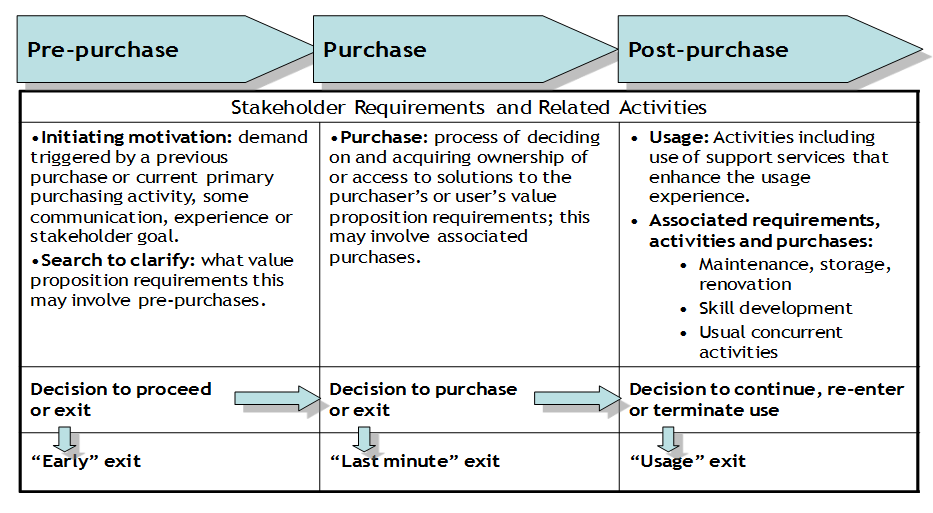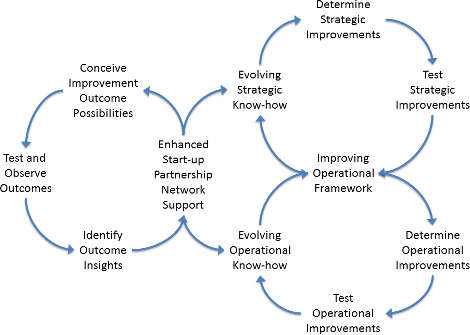Partnership Networks are independent businesses that have agreed to collaborate with a corporate sponsor in exchange for funding or other support. Examples include the Century 21 real estate network, businesses funded by and operating under the Virgin brand and Microsoft Competency Partners. Partnership networks in which the independent businesses are all start-up businesses and the purpose of the collaboration is to successfully commercialise an innovative market outcome involving a significant customer usage simplification, which we’ll call “start-up partnership networks,” are likely to be significant contributors to commercial innovation in the decade ahead.
Partnership networks have evolved to address performance issues in traditional corporate networks. Over time, individual corporate branches are transformed from a fully administered branch into independently owned and managed branches that operate within agreed guidelines. After the transformation, branches typically increase performance and the corporate network culture starts to transform into a partnership network culture. Walmart transformed from a centralised leadership to a branch level distributed leadership culture facilitated by NCR and Teradata technology.
Partnership networks can be characterised by their:
- Method of funding: is the network self-funded via capital raised from individual members (e.g., agricultural produce co-operatives), is it funded by a corporation seeking to enhance or diversify its competitiveness (e.g., a bank purchases an independent mortgage broking network) or is it funded via a financier seeking a return?
- Funder’s involvement: is the network run by the funder, the members or a mix of both?
- Stage of member development: are members typically start-ups, rapid growth or mature entities?
- Primary purpose: to provide enhanced marketing support, to commercialise an innovative customer outcome, or to provide access to a new market?
GE’s “Illuminated Minds” videos series (moderated by GE CMO Beth Comstock) discussed the future importance of partnership networks in which an organisation, such as GE, invests scaling up funds in a number of start-ups that are each providing an innovative contribution to the desired market outcome, to enhance the organisation’s strategic position without generating disruptive issues for existing governance policies. The discussion concluded that partnership networks were likely to play an important competitive role in the period ahead.
Drawing on research and advisory involvement over several decades with a diversity of emerging partnership networks in different commercial contexts, we will look at some of the trends likely to increase the rate of partnership network growth and discuss the two key strategies to extract the potential of a start-up partner network.
Trends Likely to increase the rate of growth of start-up partner networks
- Alignment with community expectations: remuneration packages need to be internationally competitive, as major corporations compete internationally for executive talent drawn from a limited pool. However, escalating competition for talent has created a widening gap between the highest and lowest paid. Community and shareholder supported activism against excessive executive salary packages is likely to increase in the period ahead. Partnership networks offer a way of securing the contribution and risk taking of expensive talent without breaching community or shareholder expectations.
- Securing sustainable growth: In the 1950s, Peter Drucker and others argued simplistically that satisfied customers were the key to organisational performance and sustainable growth. Many subsequent attempts have been made to specify the key to sustainable business success. Aligning the interest of shareholders and business leadership was the best way to secure performance that benefitted all stakeholders, but this approach has often resulted in marginalising some critical stakeholders. By the 1990s, it was proposed in a highly influential book “The Loyalty Effect” authored by Frederick F. Reichheld (who was at the time a director of Bain & Company) that the key to performance sustainability is to ensure that value created is equitably shared amongst the stakeholders that create the value. Partnership networks provide opportunities to align effort invested and risk taken with an appropriate return from the value created.
- Risk-hedged pathway to future corporate growth: Start-ups tend to perceive risk differently to corporations with established governance policies and cultures. Start-ups are better able to deal with rapidly unfolding commercialisation risks that executives in mature business units would find cumbersome to deal with, often in environments in which speed of commercialisation can deliver competitive advantage. In addition, the extended lead time before start-ups start turning a profit can adversely affect executive bonus payments and result in short term bonus driven thinking and decisions at the expense of longer term performance.
“…When the situation has been reversed and Virgin has partnered with a small management team ready to take on a new market sector or territory, I like to think that we have held true to our principles and given our partners the time, space and capital they needed to build their businesses … Virgin Active is now a leading business in the sector, and Matthew is chief executive. Virgin supplied the brand, the reputation and sometimes the capital that the business needed. The management team provided the industry knowledge, the local expertise and, above all, the passion and commitment to make it all work.”
— Richard Branson
Enhancing Start-Up Partner Network Performance
Start-Up partner networks are about simplifying, from the customer’s perspective, complex demand processes in order to deliver a valued outcome. For example, instead of leasing a motor vehicle, servicing and maintaining it, dealing with taxation paper work, negotiating petrol discounts and making vehicle replacement arrangements, an innovative customer outcome would be to offer the customer a fixed cost per kilometre travelled and handle all the above functions on behalf of the customer. The first time such a fleet management contract was offered it would have involved a bank’s leasing arm establishing a start-up partnership by bringing together the expertise necessary to deliver the customer outcome.
The key to identifying potential customer outcome opportunities is to undertake a detailed demand process analysis. An approach is outlined below and is the initial stage in undertaking a Strategic Arena Analysis®.
Diagram 1: Generic Template for Mapping Demand Processes

Demand process analysis brings into focus:
- Opportunities to meet customer needs before the main purchase; e.g., how to find relevant information to understand the different offers that are currently available
- Opportunities to meet other needs that arise as a consequence of the main purchase; that is, including possible post-purchase requirements
- Demand processes that are “one-off” events and therefore offer little opportunity to pre-, post-, up- or cross-sell to meet additional customer needs.
Demand Process Checklist to Generate Outcome Opportunity Possibilities
- Make it easier or unnecessary for customers to determine their requirements and justify the purchase decision while minimising post-purchase dissonance
- Screen potential suppliers using agreed selection criteria
- Establish a fund to finance purchases at a lower cost of capital
- Assume responsibility for installing, deploying or setting up the purchase
- Modify other products or processes to work seamlessly with the purchase
- Adapt the purchase to its particular context or to a specific use
- Maintain the purchase by anticipating the need for service or replacement components
- Anticipate the need for consumables used by the purchase and related purchases
- Use the purchase more productively by training personnel or by providing support
- Emerging possibilities to use big data for competitive advantage.
Diagram 2 – Continuous Improvement to Deliver Sustainable Risk Managed Performance

To sustainably grow a start-up partner network while managing innovation risks, corporations need to ensure that they develop processes that continuously enhance support for the network, as shown above in diagram 2. This know-how improvement must include the ability to successfully establish and support start-up partnership networks and, by tracking expected future returns and risks, determining when the timing is right to transform into a growth network partnership, a mature corporate network, or to divest.
Assisting start-up network partners to improve their ability to identify, assess and fund scaling-up for the commercialisation of agreed demand process outcome opportunities is increasingly likely to involve the capture and analysis of big data. Improving the ability to support the growth of start-up partners by learning methodically and progressively how to improve performance from joint experiences faster than competition is a basis for significant on-going competitive advantage.